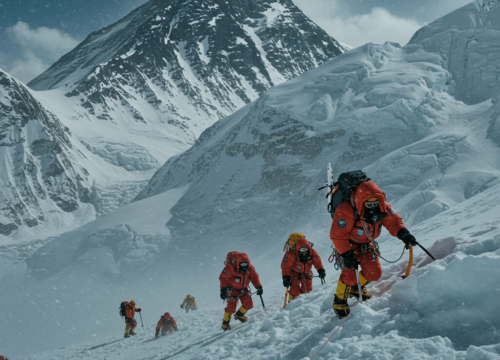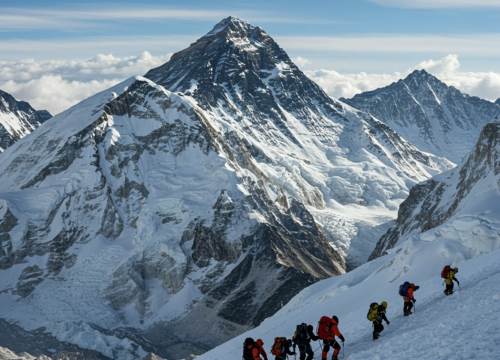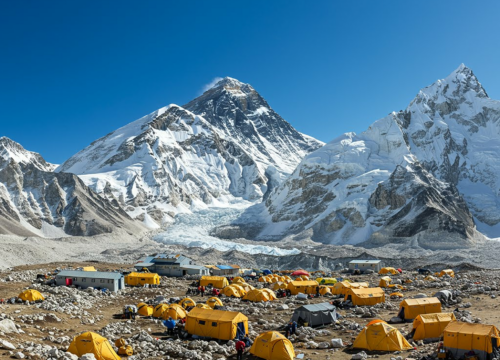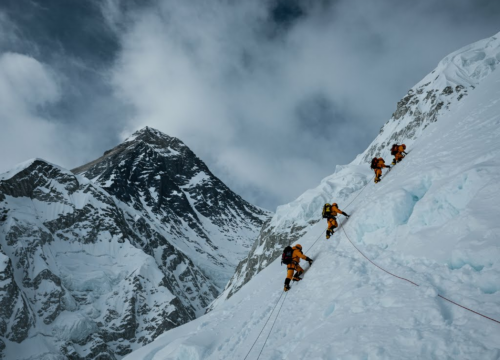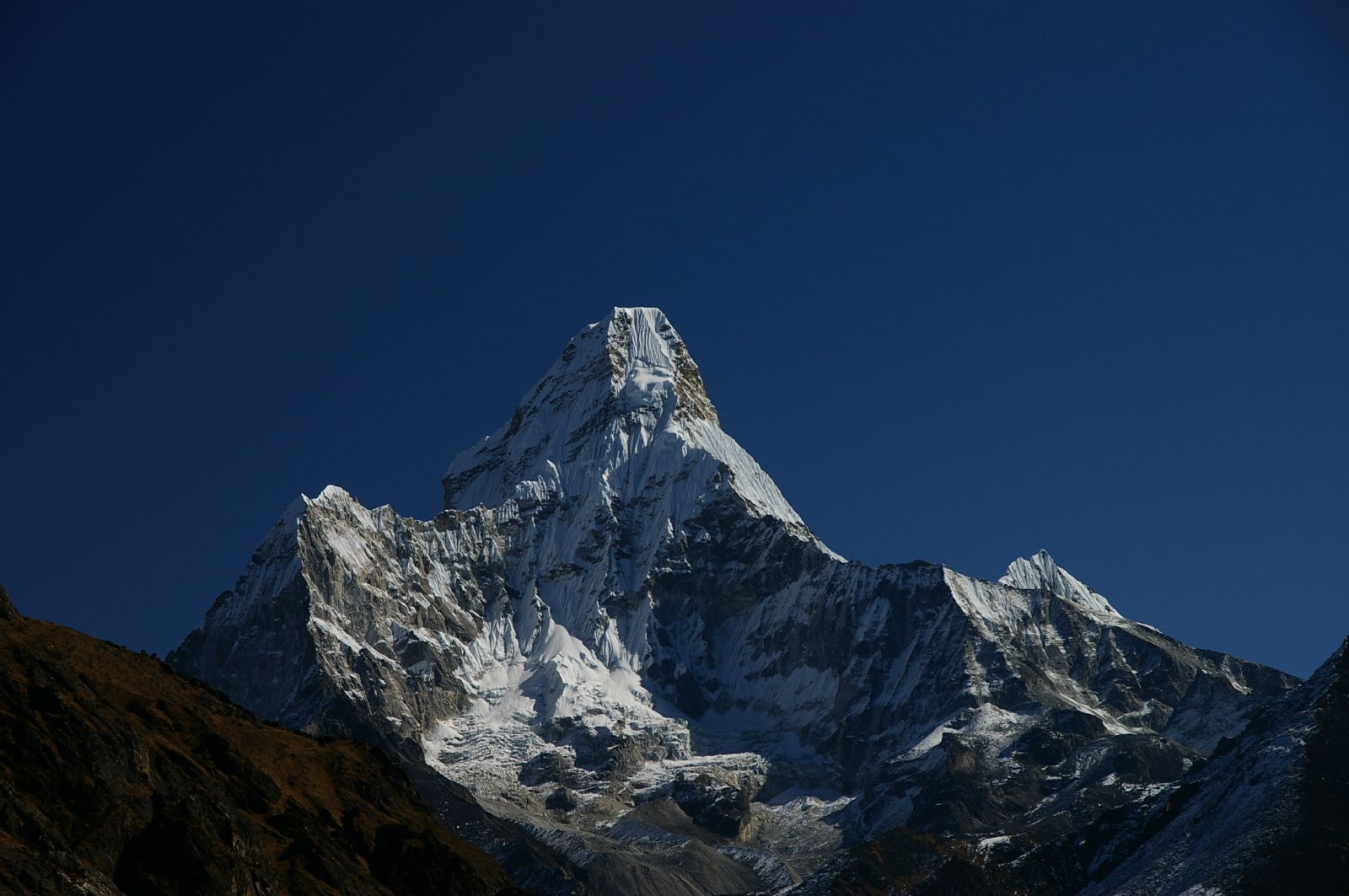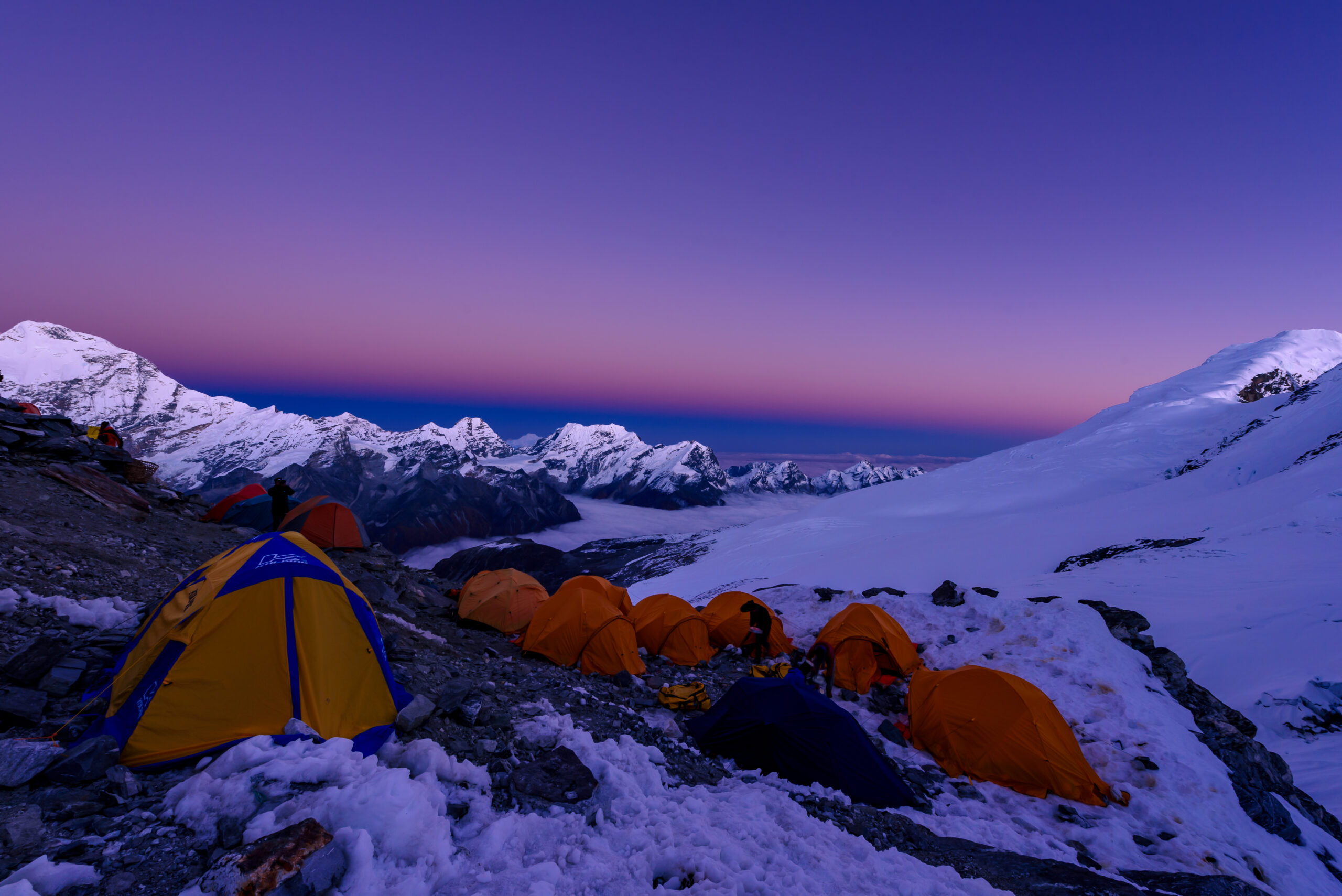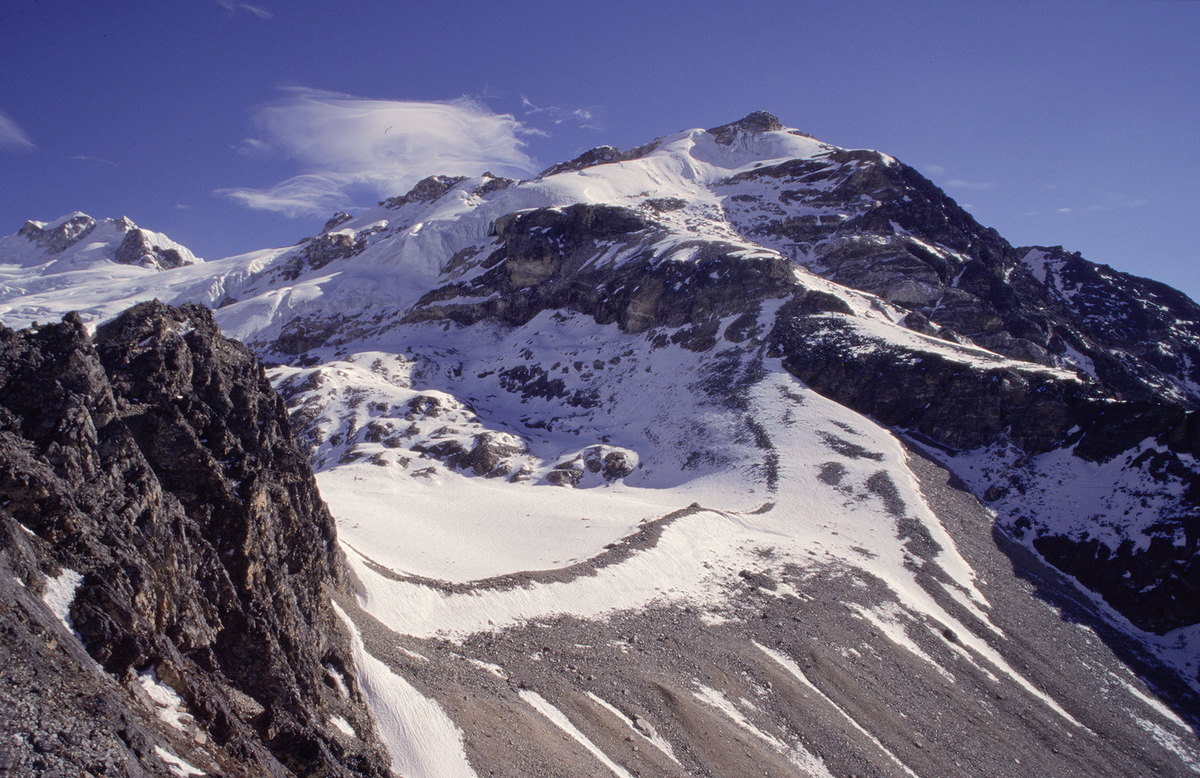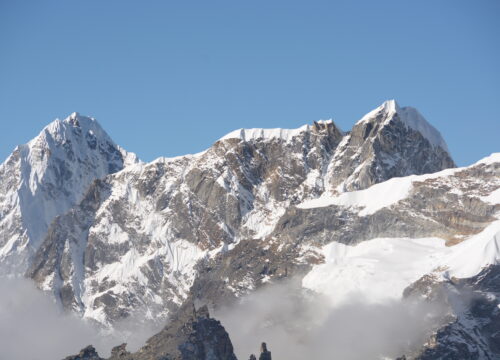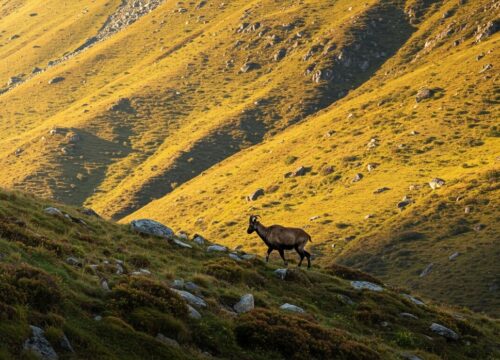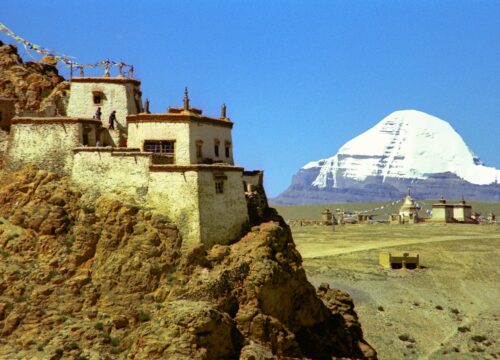Climb Mount Everest (Expedition)
Explore Tours
The Everest Expedition stands as one of the most iconic and daunting challenges in the realm of mountaineering, drawing adventurers from all corners of the globe. Mount Everest, towering at an astonishing height of 8,848.86 meters (29,032 feet), is not just the highest peak on Earth but serves as a powerful symbol of human endurance, ambition, and the relentless spirit of exploration. The first successful ascent of this formidable mountain was achieved on May 29, 1953, by the renowned New Zealander Sir Edmund Hillary and the valiant Nepalese Sherpa Tenzing Norgay. They accomplished this remarkable feat via the Southeast Ridge, a route that has since become legendary and is frequently utilized by climbers. This historic climb not only marked a significant milestone in the annals of mountaineering history but also ignited a fervent interest in summiting Everest, inspiring generations of climbers to undertake this monumental endeavor.
Preparation for an Everest expedition is extensive and meticulous, encompassing a comprehensive phase that involves rigorous physical training, acclimatization to high altitudes, and detailed logistical planning. Typically, the duration of most expeditions spans approximately 60 days. During this time, climbers spend several weeks in Kathmandu, the vibrant capital of Nepal, where they procure necessary permits, organize gear, and set in motion their logistical plans. After these preparations, climbers undertake acclimatization treks that lead them to Base Camp, which sits at an altitude of around 5,364 meters (17,598 feet).
Acclimatization is crucial, as it allows the body to adjust gradually to the thin air at high altitudes. Climbers usually follow a carefully designed acclimatization schedule, which involves making multiple rotations from Base Camp to higher camps. This approach allows them to ascend to greater heights, only to descend back to lower elevations to sleep—a critical strategy known as “climb high, sleep low.” This technique minimizes the risks associated with high altitude sickness, which can pose a significant threat.
The ascent itself is fraught with numerous hazards and challenges. Climbers must contend with extreme weather conditions that can change suddenly and unexpectedly, ranging from fierce blizzards to unrelenting sunshine. High altitude sickness can set in due to insufficient oxygen levels, leading to symptoms such as dizziness, headaches, and severe fatigue. The physical demands of navigating through treacherous terrain—such as the notoriously dangerous Khumbu Icefall, with its massive crevasses and shifting ice blocks, as well as the South Col, where winds can howl fiercely—add another layer of complexity to the climb.
Along the climbing route, several camps act as strategic resting and acclimatization points. Camp I, located at 5,900 meters (19,500 feet), serves as the first major stop. Camp II, at 6,400 meters (21,000 feet), is often referred to as the “advanced base camp,” offering climbers a critical rest point before tackling the higher altitudes. Camp III, situated at 7,300 meters (23,700 feet), is specifically designed for climbers to acclimatize further and prepare for the strenuous ascent to Camp IV. Normally, climbers aim to summit during a slim window in May, when weather conditions are considered most favorable, and the chances of success are at their peak.
Despite the advancements in climbing technology and techniques over the years, the Everest expedition remains a perilous undertaking. Potential dangers include avalanches that can strike with little warning, crevasses that can engulf the unwary, and rapid weather changes that can turn deadly in mere minutes. Climbers are not only physically tested but also mentally challenged, battling exhaustion and fatigue as they push their limits in an environment where every breath can feel like a monumental effort.
Yet, for many, the allure of standing on the world’s highest peak persists, serving as an enduring source of inspiration and motivation. The chance to inscribe one’s name in the storied history of mountaineering beckons adventurers from all walks of life, each yearning to leave their mark on this majestic mountain.
In conclusion, the Everest Expedition transcends the mere act of reaching the summit; it is a profound journey that puts human resilience and spirit to the ultimate test. As climbers traverse this breathtaking yet treacherous landscape, they engage in a timeless quest that surpasses personal achievement, embodying the unyielding human desire to explore, conquer new heights, and celebrate the spirit of adventure that defines us all.
Included/Exclude
- ARRIVAL AND DEPARTURE
- HOTEL ACCOMMODATIONS
- SIGHTSEEING FEES
- DOMESTIC FLIGHT TICKET
- TRANSPORTATION
- GUIDE
- EQUIPMENT & GEARS
- Visa Fees
- Travel Insurance
- Meals Outside of Itinerary
- Entry Fees for Attractions
- Optional Activities
- Tips and Gratuities
- Transportation Costs Beyond Itinerary
Tour Amenities
Itinerary
Upon arrival in Kathmandu, climbers are greeted and transferred to their hotel. This day is primarily for rest and recovery after travel, allowing participants to acclimatize to the local environment.
These two days are dedicated to gear checks, shopping for any last-minute supplies, and attending briefings regarding the expedition. Climbers will also complete necessary formalities to obtain climbing permits and attend safety briefings about the journey ahead.
Altitude: Phakding (2,610m)
A scenic flight takes climbers from Kathmandu to Lukla, where the trek begins. The first day involves a moderate trek of approximately 3 to 3.5 hours to Phakding, a charming village that serves as an introduction to the Khumbu region.
Altitude: (3,440m)
The trek continues with a more challenging 6-7 hour hike to Namche Bazaar. This vibrant town is known as the gateway to Everest and offers stunning views of the surrounding peaks. It serves as an important acclimatization stop.
A crucial day for acclimatization, climbers will take a day hike to Khumbu village or the Everest View Hotel (3,860m). This helps the body adjust to higher altitudes while providing breathtaking views of Everest and other peaks.
Altitude: (3,867m)
The journey continues with a 5-6 hour trek to Tengboche, home of the famous Tengboche Monastery. This serene location offers spiritual insights and stunning vistas of the Himalayas.
Altitude: (4,400m)
Climbers will trek for another 5-6 hours to Dingboche. This village is known for its beautiful landscapes and serves as another acclimatization point.
Altitude: Nangkartshang Hill (5,100m)
A day hike up Nangkartshang Hill allows climbers to gain altitude without the stress of a full trek. The views from this hill are spectacular and provide excellent photo opportunities.
Altitude: (4,900m)
The trek continues with a 5-6 hour walk towards Lobuche. This area is close to the Khumbu Glacier and serves as a critical point before reaching Base Camp.
Altitude: (5,364m)
After a demanding 6-7 hour trek, climbers finally reach Everest Base Camp. This iconic location is bustling with activity as climbers prepare for their summit attempts.
This period includes extensive training sessions focused on climbing techniques, proper acclimatization practices, establishing higher camps, fixing ropes and bridges, and resting before the summit push.
On the summit day, climbers embark on their journey long before dawn, making their way through the darkness with headlamps guiding their path. The ascent is arduous and demands peak physical effort, mental resilience, and unwavering determination. As climbers reach the final stretch, the air is thin, every step is a challenge, and the adrenaline courses through their veins.
Finally, after overcoming countless obstacles and pushing their limits, climbers arrive at the summit of Mount Everest – the top of the world. Standing at 8,848 meters (29,029 feet), they are greeted with stunning vistas that stretch across the Himalayas. The sense of accomplishment, the awe-inspiring beauty of the surroundings, and the realization of having conquered one of the most formidable challenges on the planet make this moment truly unforgettable. It is a testament to human spirit, endurance, and the relentless pursuit of dreams. Climbers will spend time at various camps above Base Camp as they prepare for their ascent.
Altitude: (5,364m)
After weeks of preparation and training at Base Camp, climbers will focus on cleaning up their area and packing their gear in preparation for the return journey.
Altitude: 2,860 m
Climbers will retrace their steps back to Lukla over three days, allowing time for reflection on their journey and experiences in the mountains.
A flight from Lukla back to Kathmandu marks the end of the trekking portion of the expedition. Participants can relax in Kathmandu after their adventure.
These days serve as contingency time in case additional days are needed in the mountains due to weather or other delays. It also allows for sightseeing in Kathmandu’s rich cultural landscape.
Overview of Major Cultural Attractions
1. Namche Bazaar
- Cultural Hub: Known as the gateway to Everest, Namche Bazaar is a vibrant market town where trekkers can immerse themselves in Sherpa culture. The Sherpa Culture Museum provides insights into the history and traditions of the Sherpa people, showcasing artifacts and mountaineering achievements .
- Local Cuisine and Interaction: Visitors can sample local foods and engage with friendly locals, enhancing their cultural experience.
2. Tengboche Monastery
- Spiritual Center: This Tibetan Buddhist monastery is one of the largest in the Khumbu region and offers a serene atmosphere with stunning views of the surrounding mountains. It hosts various religious ceremonies and festivals, providing a glimpse into the spiritual life of the Sherpas .
- Cultural Events: The monastery is known for its vibrant celebrations, including the Mani Rimdu festival, which features traditional dances and rituals .
3. Sherpa Culture Museum
- Located in Namche Bazaar, this museum focuses on Sherpa history and culture, displaying traditional clothing, tools, and photographs of Sherpa climbers who have summited Everest. It serves as an educational resource for trekkers interested in understanding local customs .
4. Local Festivals
- The Everest region hosts several significant festivals that reflect its rich cultural tapestry:
- Mani Rimdu: A major Buddhist festival celebrated at Tengboche Monastery, featuring colorful dances and rituals.
- Losar: The Tibetan New Year celebration includes traditional music, dance, and feasting .
- Dashain and Tihar: Important Hindu festivals celebrated by both Sherpas and other communities in the region .
5. Ancient Monasteries
- In addition to Tengboche, trekkers can visit other monasteries such as:
- Pangboche Monastery: Known for its historical significance and beautiful surroundings.
- Khumjung Monastery: Home to a reputed yeti scalp, this monastery offers insights into local beliefs and practices .
6. Traditional Villages
- Trekking through villages like Thame and Dingboche allows visitors to experience traditional Sherpa life firsthand. These villages feature unique architecture, local markets, and opportunities to interact with residents.

